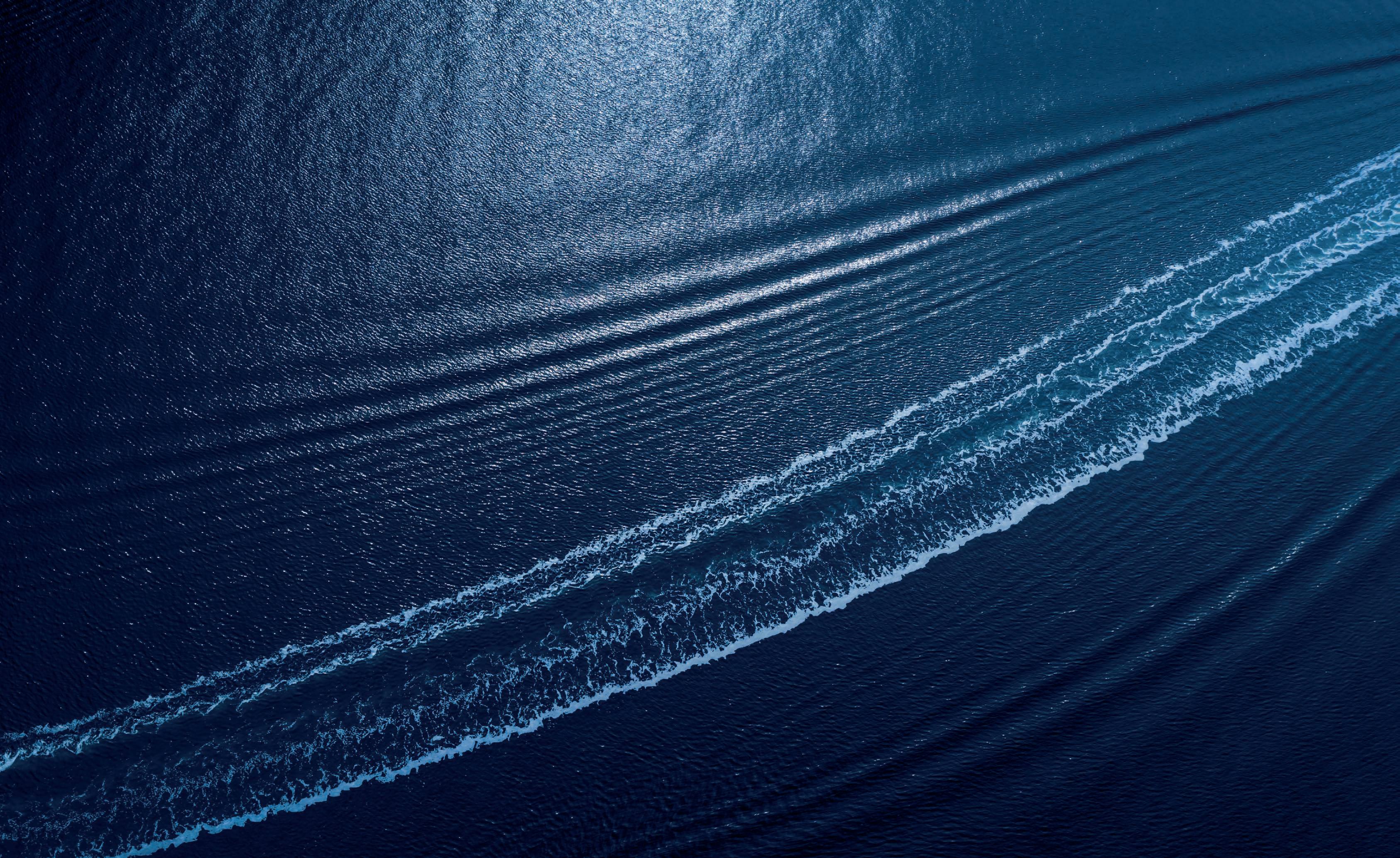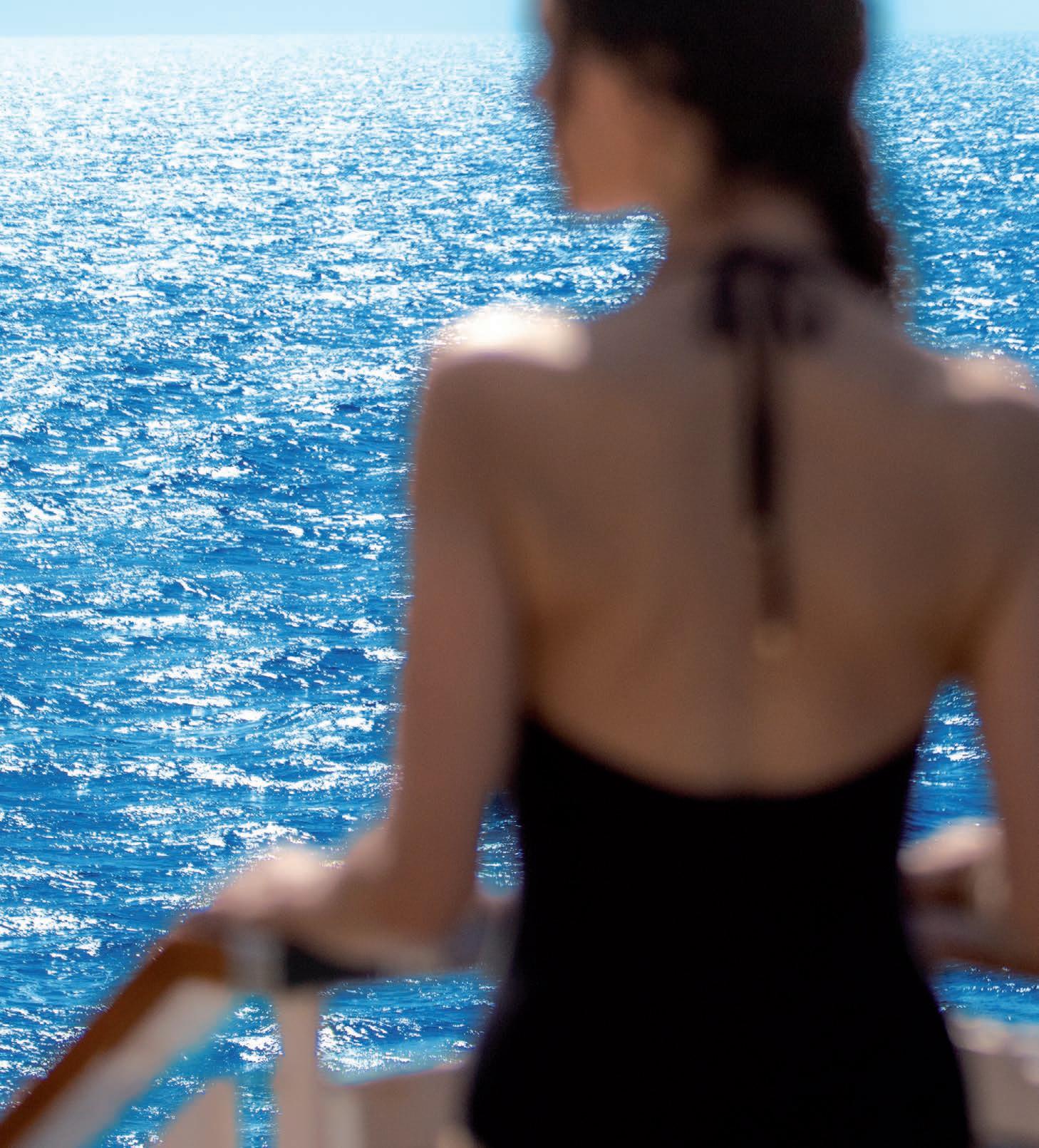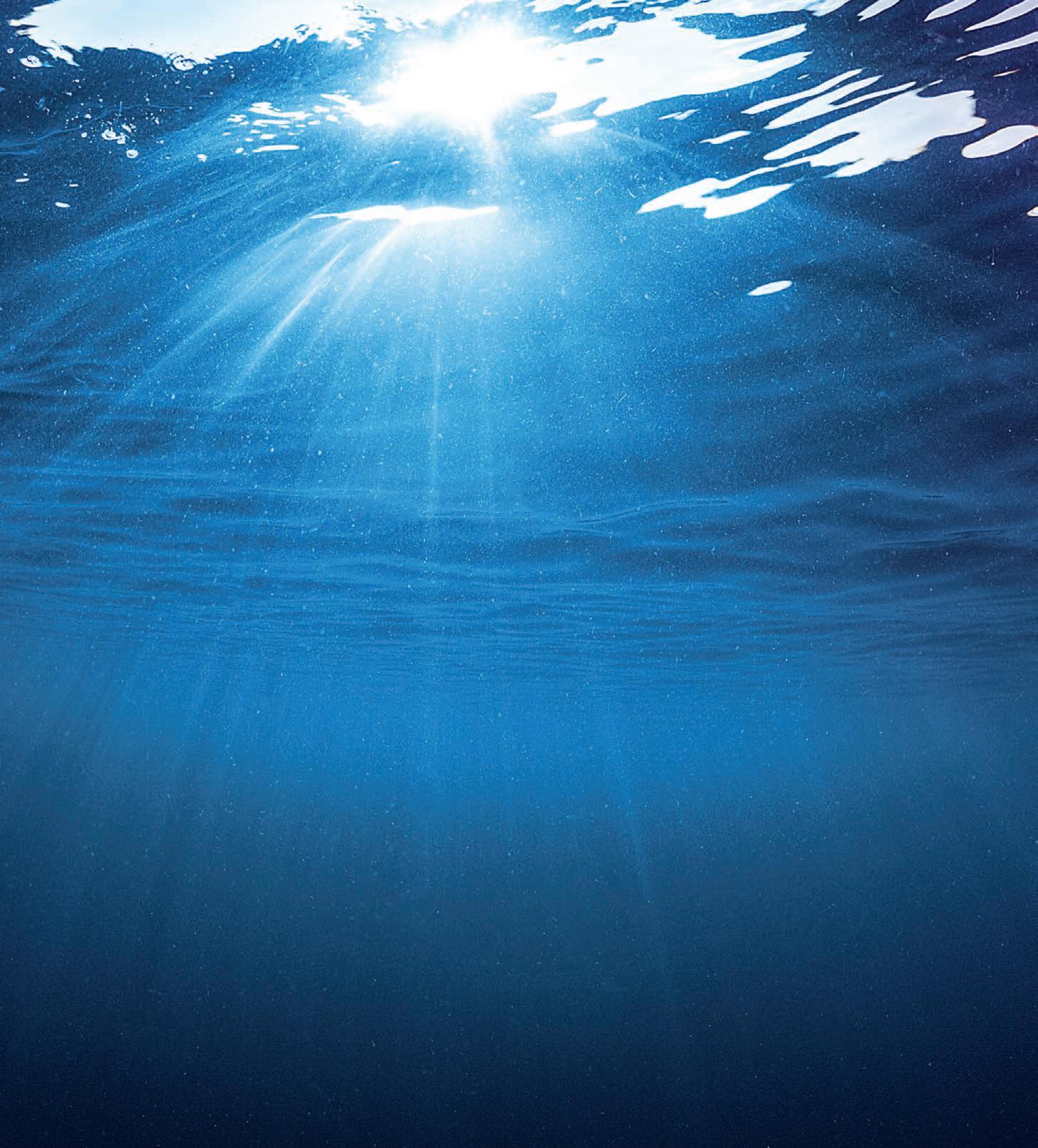
5 minute read
Voyage into the Super-Natural
EVOLUTIONARY CRUISING Ecoventura’s Theory is a great base for exploring the Galápagos Islands
A Galápagos cruise is a trip to a prelapsarian wonderland for everyone on board, writesBruce Wallin
In the Galápagos Islands, every new encounter with nature brings out a childlike curiosity in travellers. At such times, it’s convenient to have Jeffo Marquez, aka the Human Google, on hand to answer the inquiries that inevitably follow.
How long does a sea-lion pup nurse? Why is the sand on this beach green? How long can a
Galápagos tortoise live? Do sharks eat their young?
Marquez, a guide for the Galápagos expedition company Ecoventura (ecoventura.com), fielded several such questions on a recent seven-night cruise through the Ecuadorian archipelago’s central and southern islands. The questions came from me, my nine- and 20-year-old daughters, a retired attorney, an oral surgeon and each of the seven other passengers on a wild adventure that was enlightening – and invigorating – for answer-seekers of all ages.
Questions and curiosity – specifically those of the 19th-century explorer and evolutionist Charles
Darwin – helped make the Galápagos one of the world’s iconic wildlife destinations. But, unlike the more passive, vehicle-based wildlife experiences common elsewhere, a cruise through these famously abundant islands is a roller-coaster ride of activity and immersion. Each time you flip yourself off a panga into the Pacific Ocean, you submerge into a thriving ecosystem of pirouetting sea lions, rainbow-coloured reef fish, gliding green turtles and countless other creatures large and small. On land, walks along a powder-white sand beach – or, perhaps, olive green (the result of olivine crystals from the erosion of basalt lava flows, said Marquez) – might lead to a black volcanic trail where a pair of blue-footed boobies perform a courtship song and dance while Godzilla-like marine iguanas navigate the crashing surf offshore.
The thrills and interactivity of a Galápagos cruise make it an ideal adventure for families – and one with an increasing number of options to satisfy every member of the clan. Our base was
Ecoventura’s exquisite 10-cabin Theory, one of two identical Relais & Châteaux–member yachts operated by the Ecuadorian-owned outfitter. The company is launching a third yacht, Evolve, in
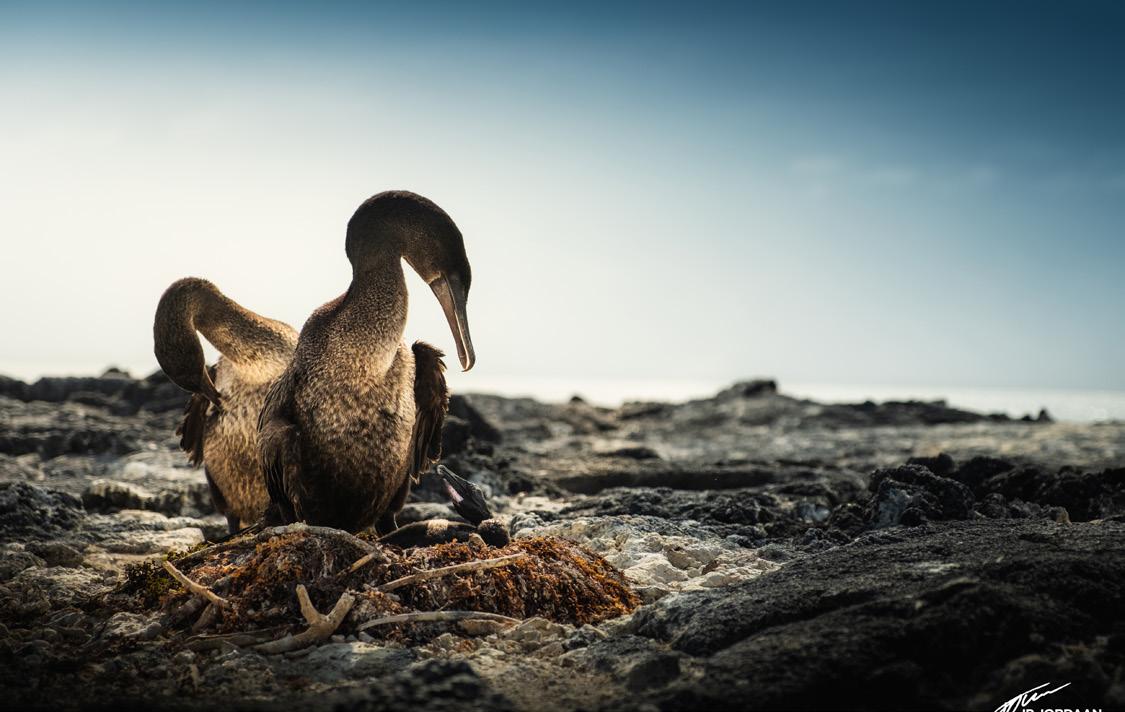
WINGING IT The flightless cormorant seabird is an endemic species to Galápagos
UNDERWATER LOVE Sea turtles are often sighted during snorkelling and boat trips in Galápagos
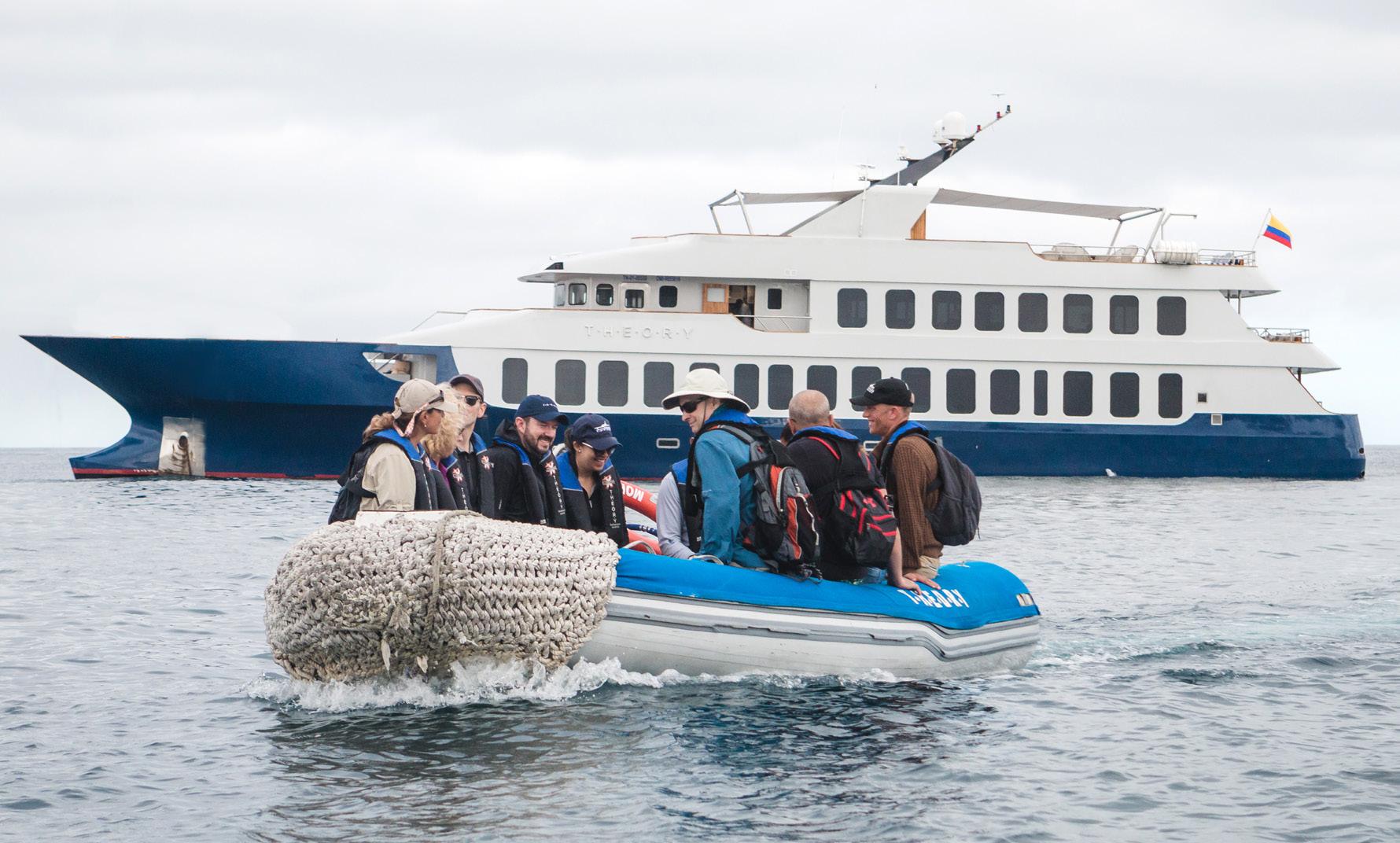
January 2023, by which time it will share the islands with several other new high-end vessels. Aqua Expeditions (aquaexpeditions.com), known for its river cruises on the Mekong and Amazon, debuted its 16-passenger Aqua Mare in the Galápagos in May. In February, Silversea (silversea.com) unveiled a new ship, Silver Origin, designed specifically to navigate the archipelago. Lindblad Expeditions (world.expeditions.com) launched the 48-passenger National Geographic Islander II in August, and Abercrombie & Kent (abercrombiekent.co.uk) is introducing new ships and itineraries in the months ahead.
The increased interest in the Galápagos coincides with a renewed focus on conservation in the region. In contrast to many wildlife destinations, where a decline in tourism decimated conservation programmes, the Galápagos has expanded protection efforts throughout the course of the pandemic. Earlier this year, Ecuadorian President Guillermo Lasso signed a law to preserve 60,000sq km (23,166sq miles) of ocean around the islands, increasing the Galápagos Marine Reserve by nearly 50 per cent. The park now extends to the waters of Costa Rica, conserving a critical migration route for whales, sharks, turtles, rays and other species.
Seeing such animals firsthand, of course, brings to life many of the fun facts you learn along the way. Prompted by Marquez, we attempted to guess a tortoise’s age (they can live for more than 150 years) based on the size of its shell. In a far more adrenaline-inducing moment, we nearly confirmed that, yes, sharks do eat their young, when we witnessed a frenzied blacktip reef shark chase a baby blacktip onto a beach, where it flopped around gasping for breath but clinging to life.
As for the sea-lion pups – whose grace underwater belies an adorable awkwardness on land – we learned that they nurse for as long as they possibly can. Marquez shared a tale about a dominant male in the islands who had reigned over his colony for far longer than any sea
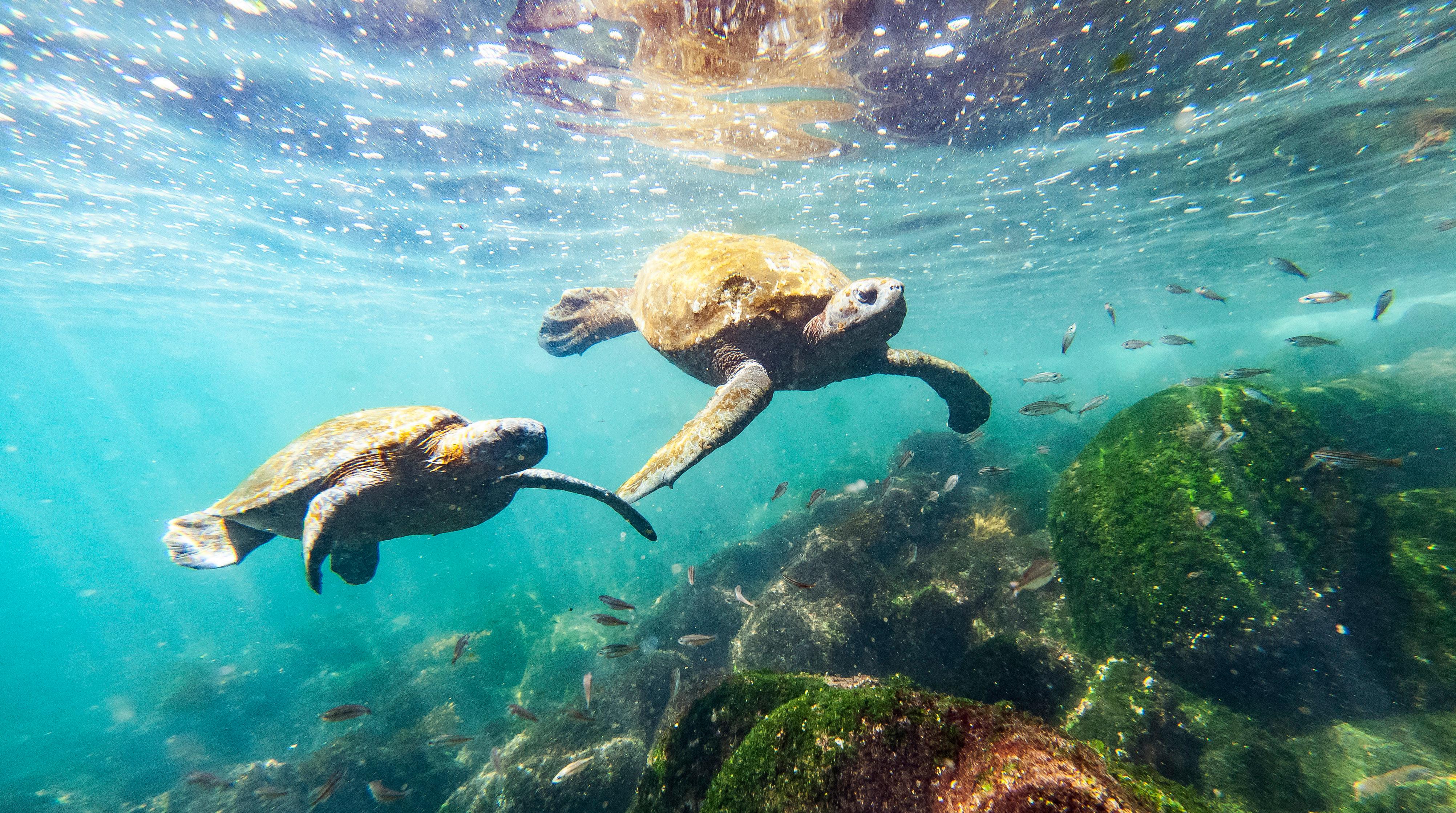
THEORY IN PRACTICE This image and below: scenes on- and off-board the 20-passenger mega yacht Theory
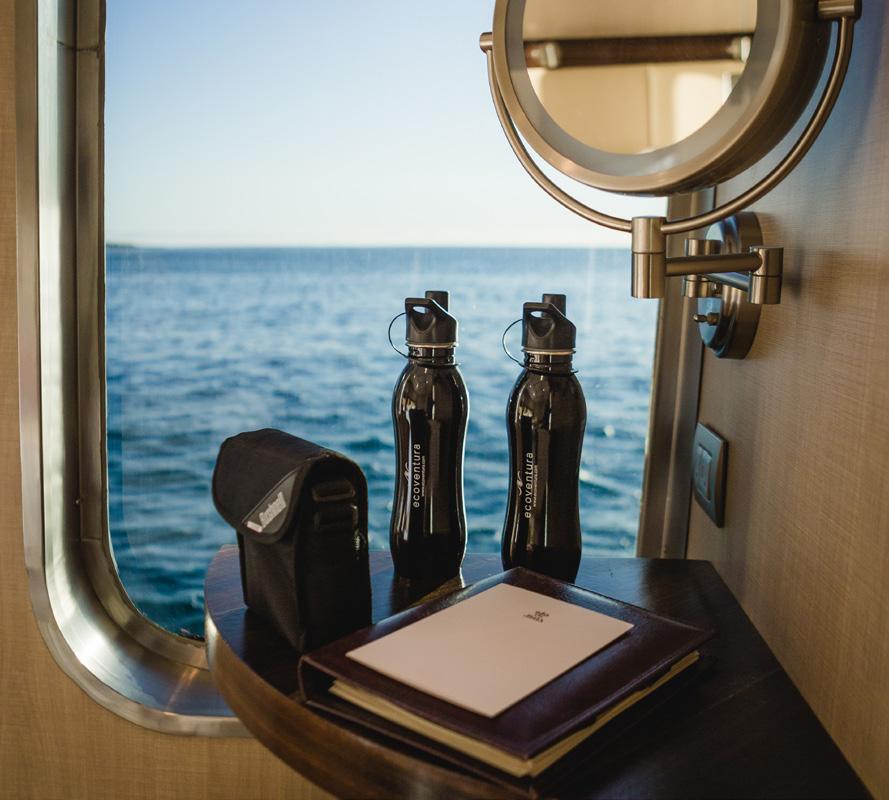
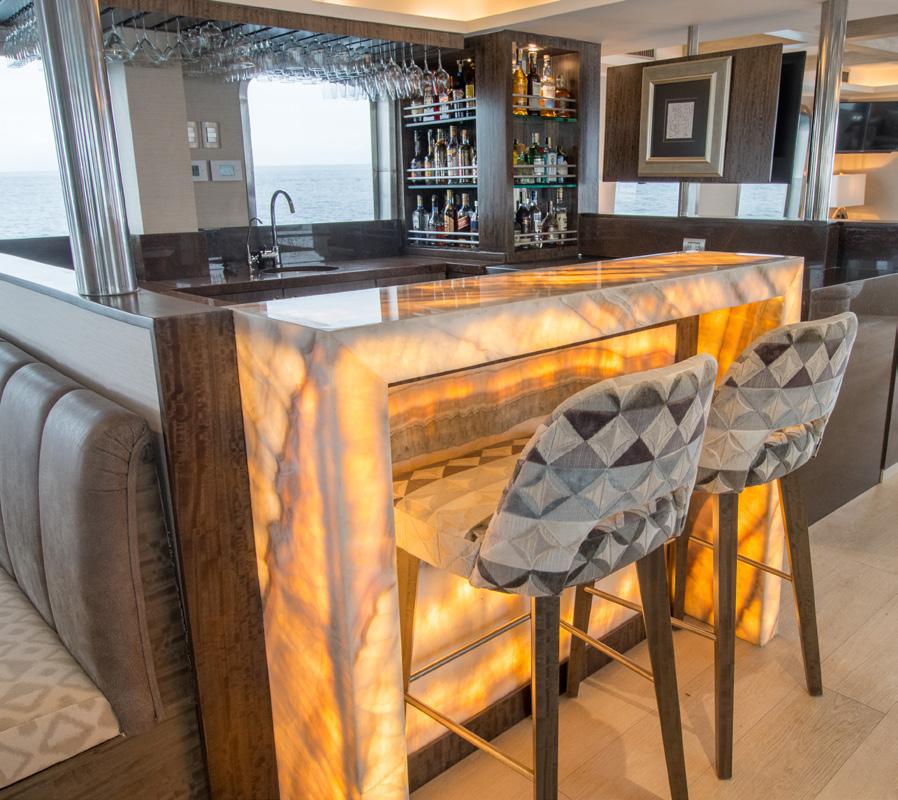
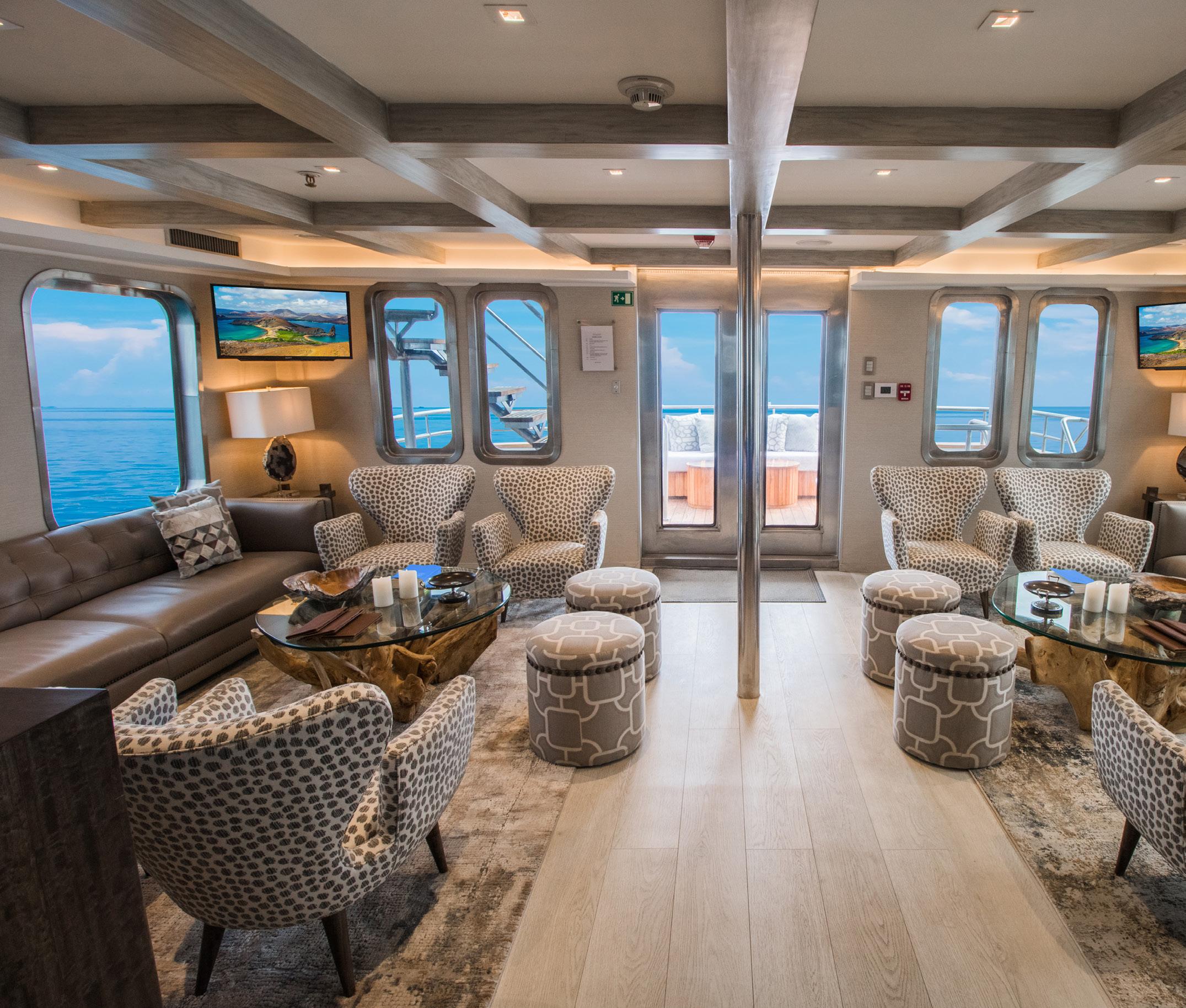
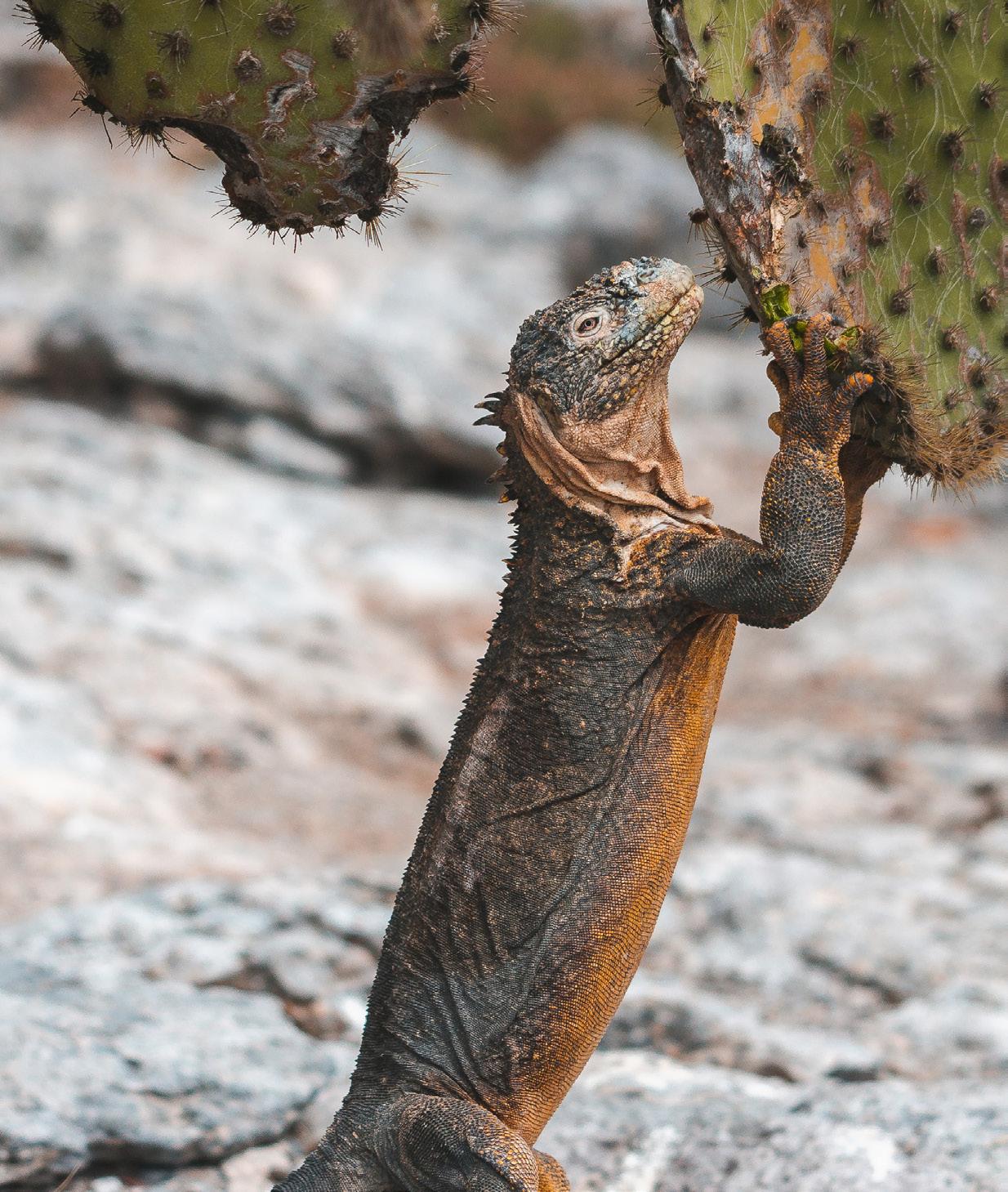
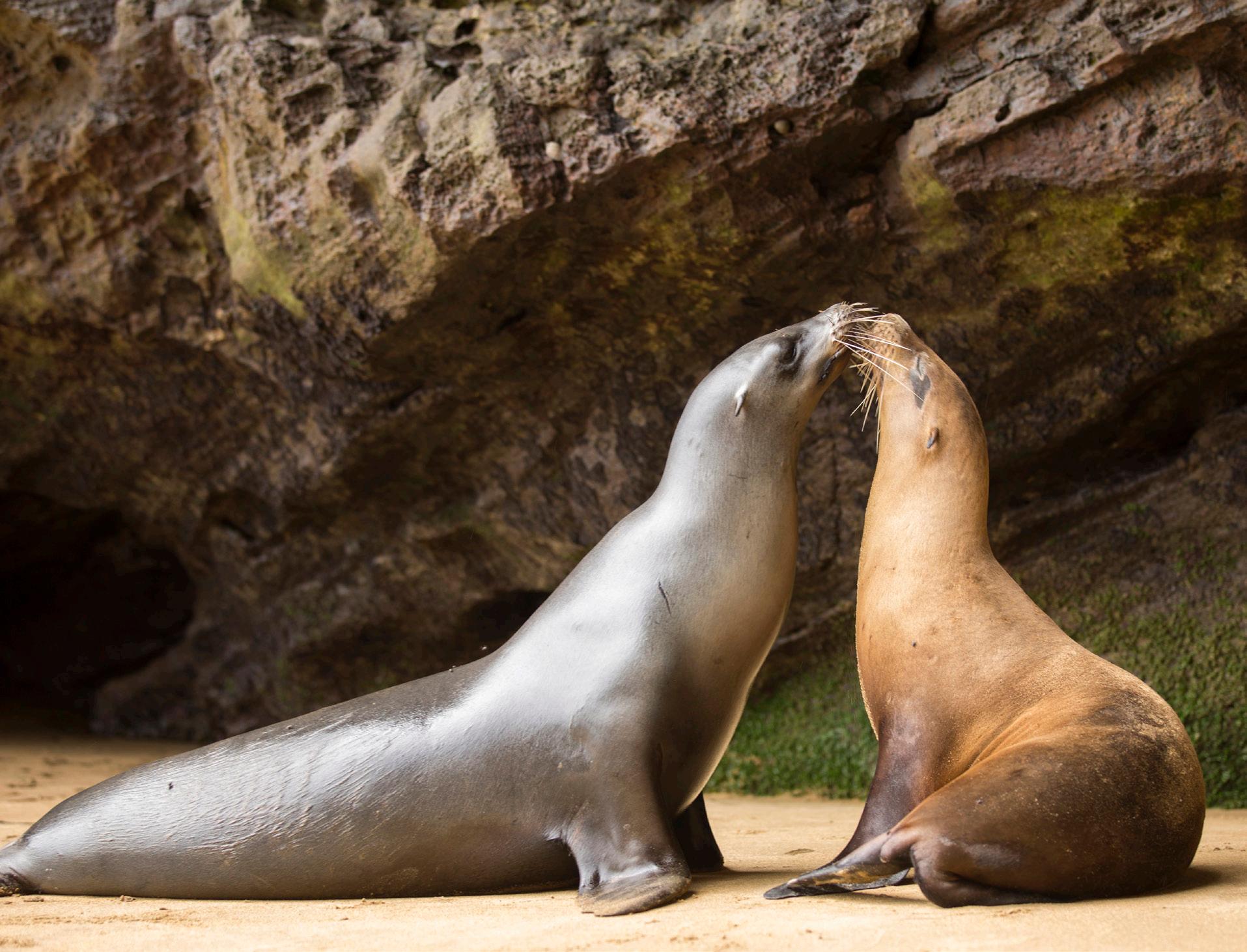
ANIMAL MAGIC Spotted in the Galápagos: sea lions and (left) a land iguana
ON THE HORIZON Sweeping views from Theory’s main lounge
In contrast to many wildlife destinations, the Galápagos has expanded protection efforts throughout the course of the pandemic
lion before him. His secret? Every few weeks he would sneak off to another colony where his mother lived – and where he could nurse in peace.
There were moments, of course, when stories and questions became untenable or unnecessary. While snorkelling in a cove teeming with olive ridley turtles, my oldest daughter followed an octopus for 45 minutes, fascinated by the camouflaged creature as it hunted and hid its way along the reef. The next day, prompted by an announcement from the captain, every guest and crew member rushed to the Theory’s bow. We arrived to find hundreds of dolphins swimming beside us, escorting the boat in a ballet of dips, tucks, jumps and twirls. After a period of delighted shrieks and laughter, we settled into a state of silence, connected to the wonder before us and inspired to protect it for the children in us all.
